Paludarium with carnivorous plants
Like many carnivorous plant growers, I too desired to have my own paludarium with carnivorous plants. However, placing plants with pots in the paludarium didn’t seem like an aesthetic and nice solution to me—I prefer natural-looking setups, which a paludarium stuffed with heaps of plants definitely is not.
For the paludarium, I used an unused turtle terrarium. With dimensions of 80x35x40 cm (LxWxH), you can create quite an impressive setup.
This is already the fourth and final version of my paludarium. After initial missteps and experimentation, I believe that this assembled paludarium can function very well for a long time, and the plants will grow happily.
For my paludarium, I decided to choose purely moisture-loving carnivorous plant species. The most suitable ones I selected were Heliamphoras, Nepenthes, and rainforest Sundews. Since I enjoy trying different cultivation techniques, I also included Cephalotus in the paludarium, though it won’t have the best conditions. To add a bit of life, the carnivorous plants share their habitat with frogs.
Key to the proper functioning of the paludarium, apart from selecting plants, is choosing suitable lighting. Given the light output and consumption, I opted for LED lights. Currently, the paludarium is equipped with two Sinkor LED 75 lights with a power of 25W. We’ll see if the performance is sufficient for new plant species, but I still have room to install at least one more 25W light. I haven’t decided on automatic irrigation or forced ventilation yet. I’ll see how the current plants adapt and add other devices as needed. However, based on my experience so far, these are more for show than essential equipment for successful cultivation (this certainly cannot be applied to all carnivorous plants).
Realization of the paludarium
For the frogs, it was necessary to create a pond, so I incorporated it into the overall concept of the paludarium. To separate the substrate from the water, preventing the water from constantly being polluted by the substrate, I used mulching non-woven fabric wrapped around expanded clay to maintain shape. This created a barrier separating the substrate and water, but it is permeable, allowing water to reach the plants.
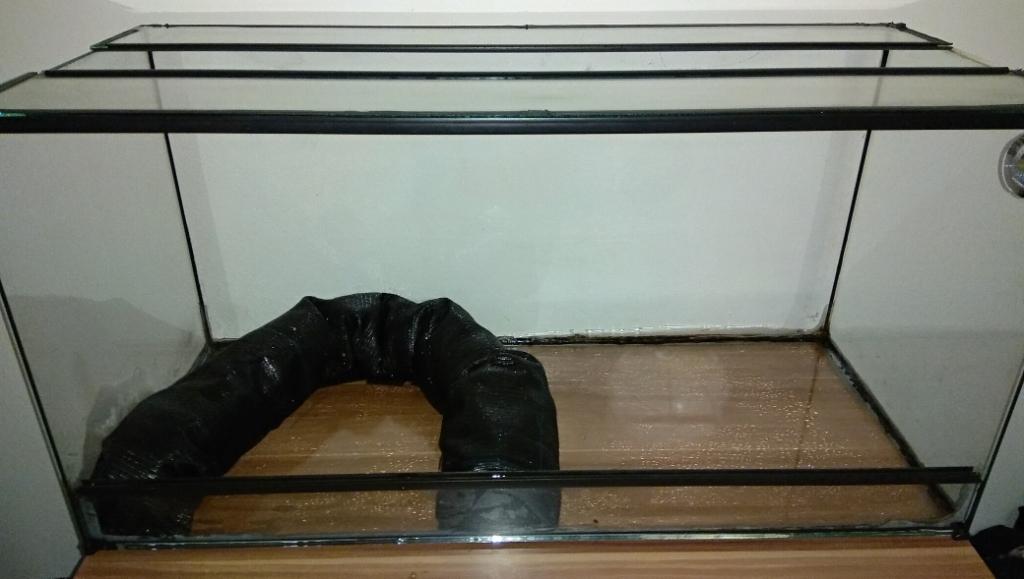
As a substrate, I used a mixture of peat, perlite, and bark in a ratio of 1:1:1. For the top layer, I added a bit of sphagnum moss. To enhance the appearance and improve the surface structure, I placed a large root in the paludarium, which also provides hiding spots for the frogs as a bonus.
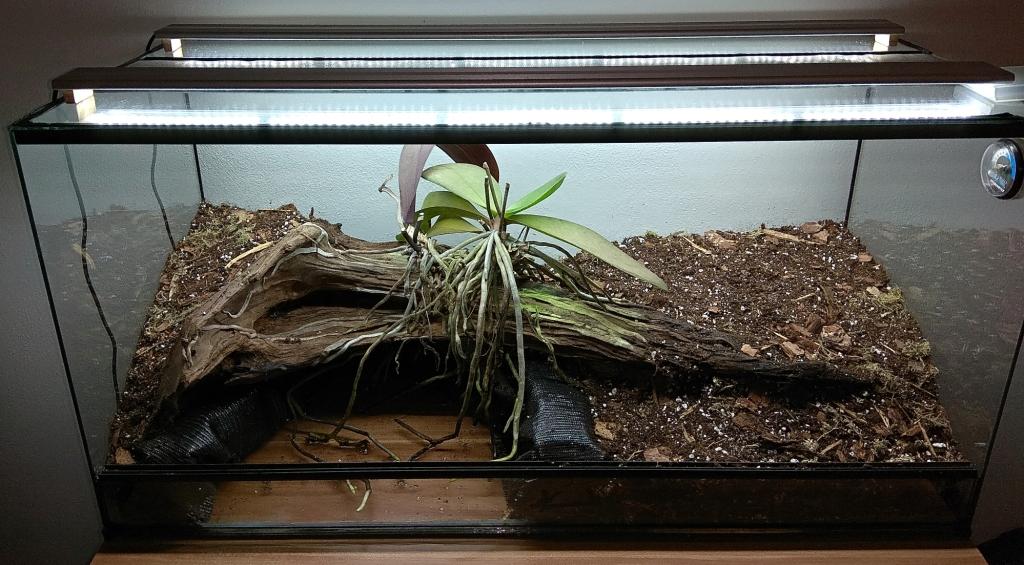
The final step was to plant the paludarium with vegetation and place live sphagnum moss on the surface of the substrate. The moss helps maintain higher air humidity, has antifungal properties, and provides a pleasant surface for frog movement. I will use pure osmotic water to ensure the quality of the substrate remains excellent over a very long time.
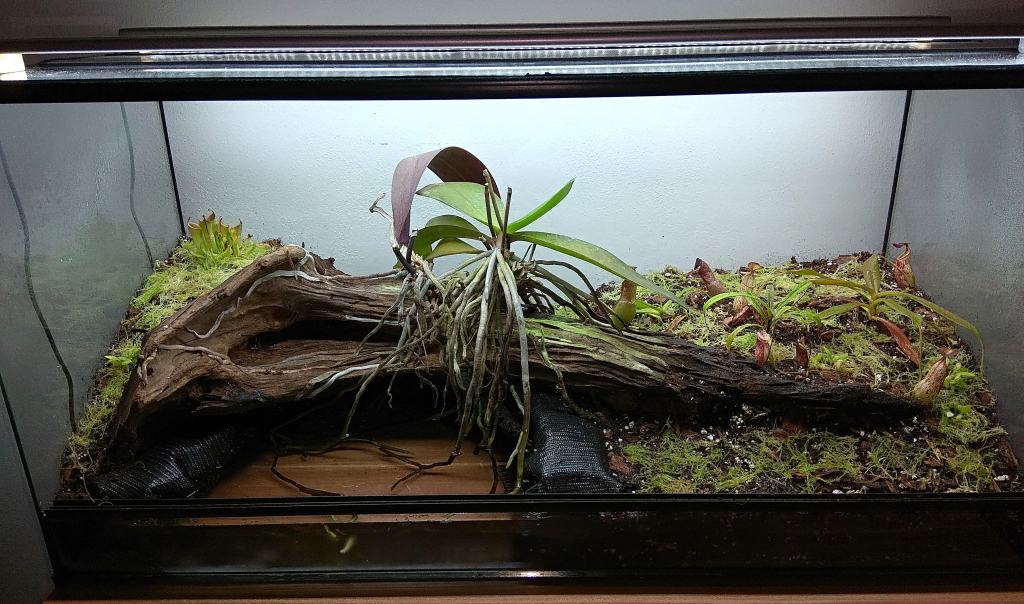
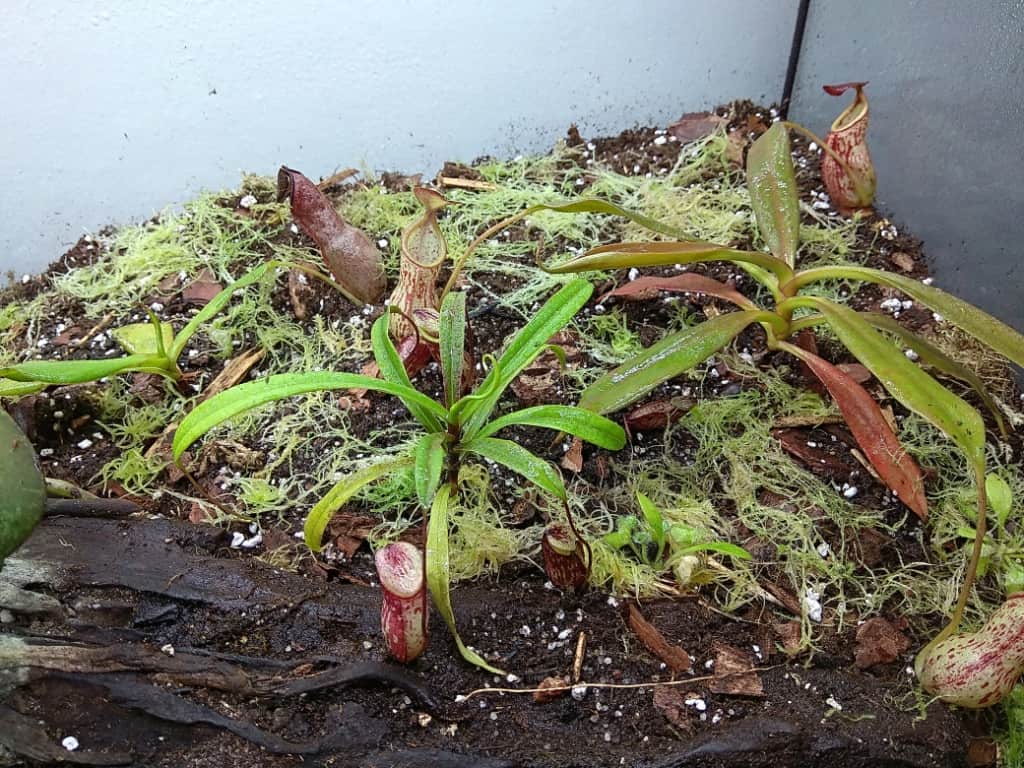
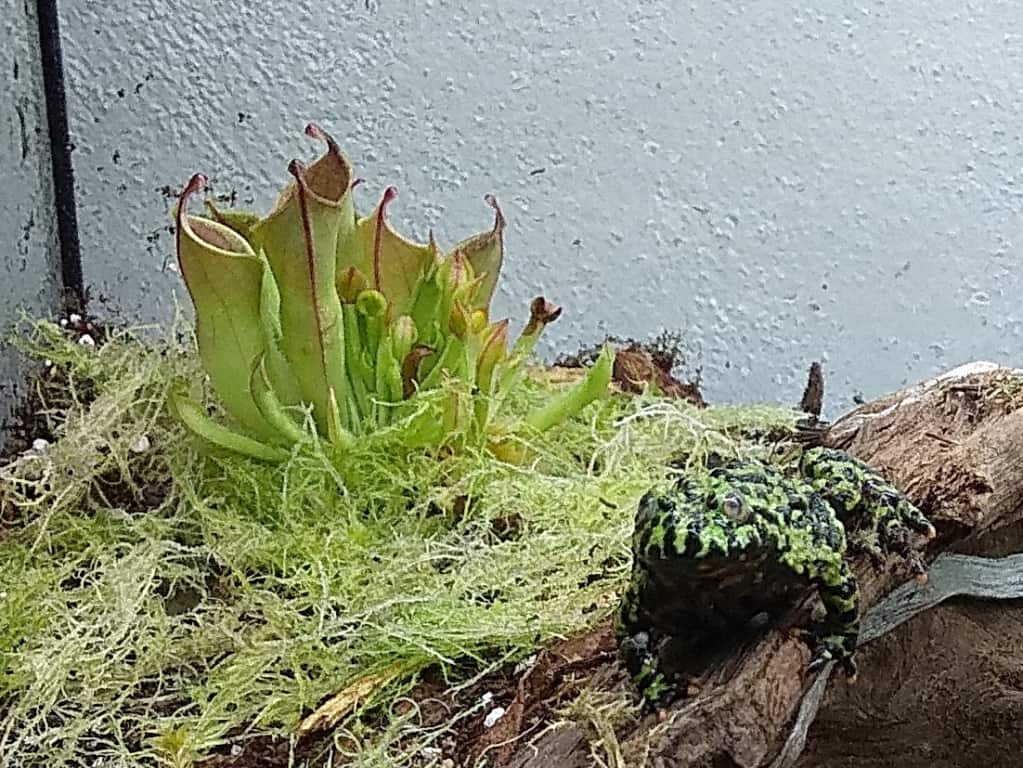
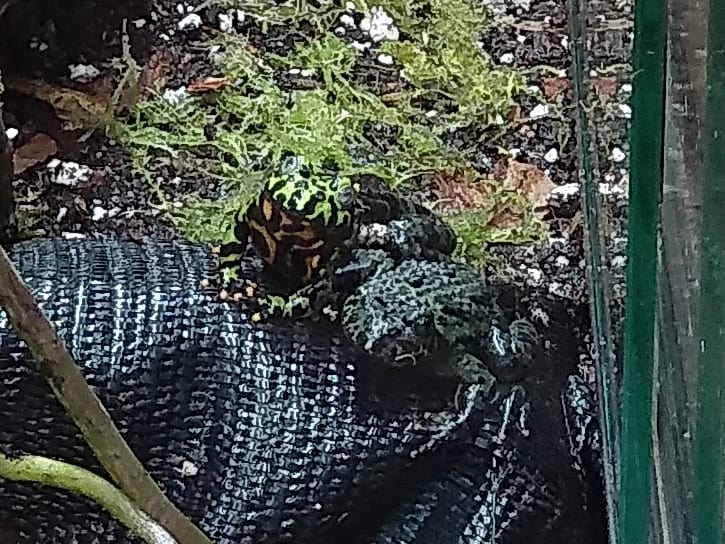
After six months, the paludarium has settled nicely. The sphagnum moss has spread beautifully and formed a continuous layer.
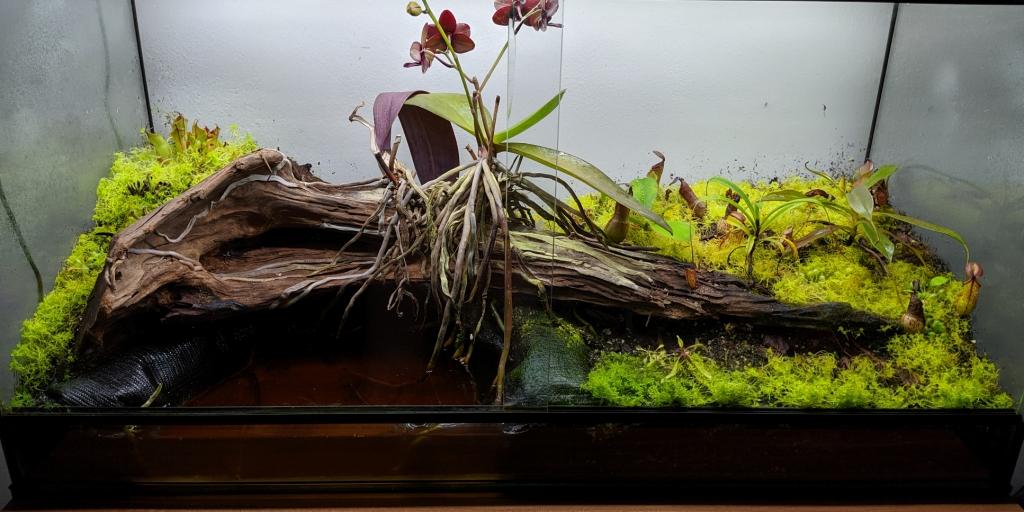
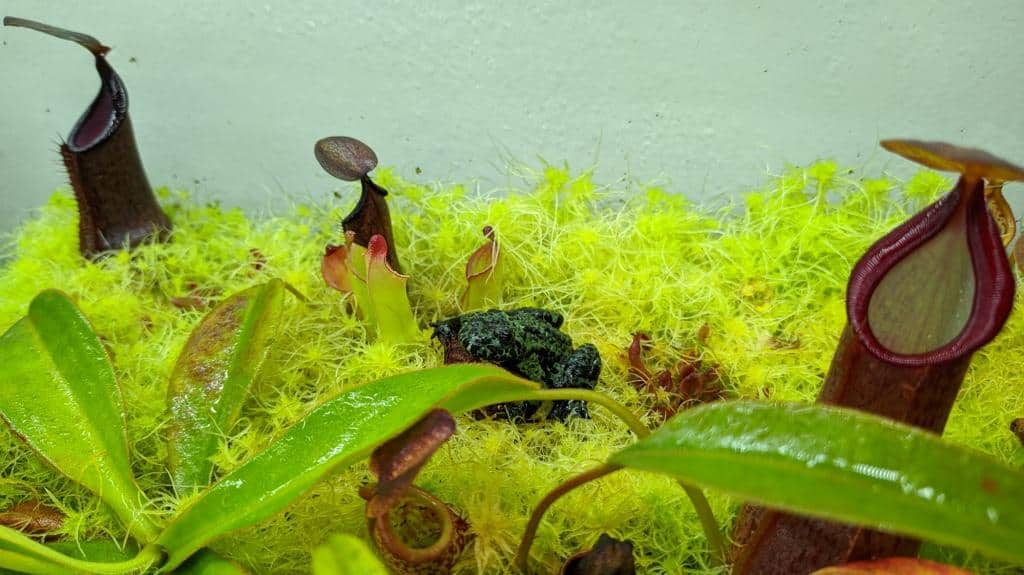
As I mentioned earlier, this is not my first paludarium with carnivorous plants. The first prototype was created about five years ago. At that time, I didn’t have such extensive knowledge, so I assembled the paludarium with plants that were easy to obtain but unfortunately unsuitable for cultivation in high humidity, which was the first major mistake. The second mistake was weak lighting, using two T8 fluorescent tubes with a power of 2x15W. The first plant inhabitants I chose were Dionaea muscipula, Sarracenia hybrid, Drosera capensis, Drosera aliciae, Pinguicula hybrid, and Nepenthes hybrid. Very soon, the condition of the Venus flytrap and pitcher plants began to deteriorate, so they had to be removed. Even the sundews and butterworts weren’t entirely happy in the terrarium, although their decline wasn’t as noticeable as that of the flytrap. From this prototype, I learned that not every carnivorous plant is suitable for a paludarium.
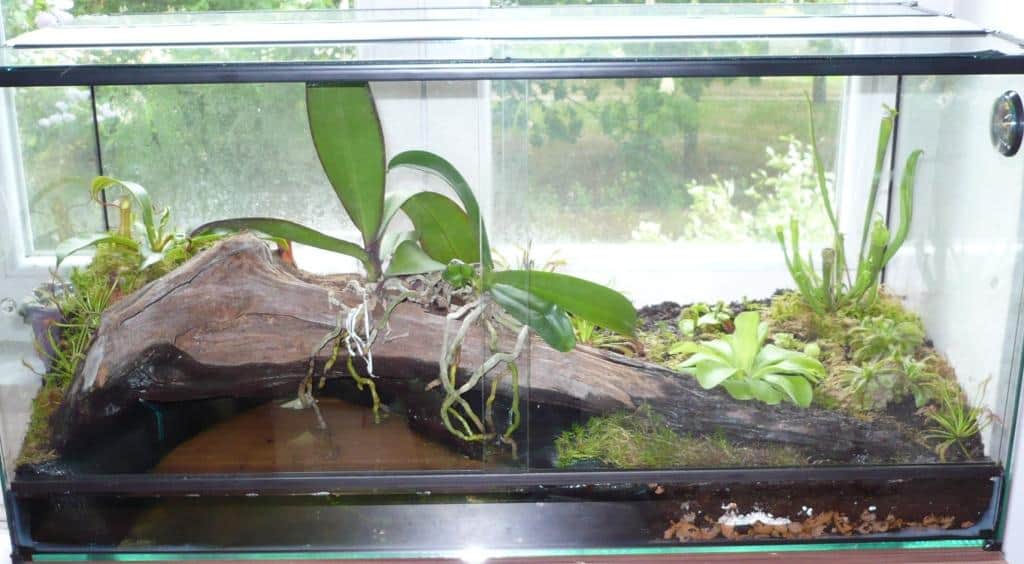
The only plant that thrived in the paludarium was the Nepenthes hybrid. For this reason, in the second version, I decided to focus on pitcher plants and kept the Drosera capensis. At that time, the butterwort was already struggling, and so was Drosera aliciae. After some time, I discovered that even pitcher plants weren’t the best choice because they are tall plants that quickly outgrow the paludarium.
As seen in the image, in just a year and a half, the pitcher plant grew to monstrous proportions, and when removing it due to the limited space, the contents of the pitchers accidentally spilled onto the plants and substrate, causing them to burn. Revisiting the concept became essential. My fascination with pitcher plants made it impossible to abandon this intriguing species. Through research, I identified several varieties that are either compact in size or grow at a slower pace, reducing the likelihood of them overtaking the paludarium within a couple of years.
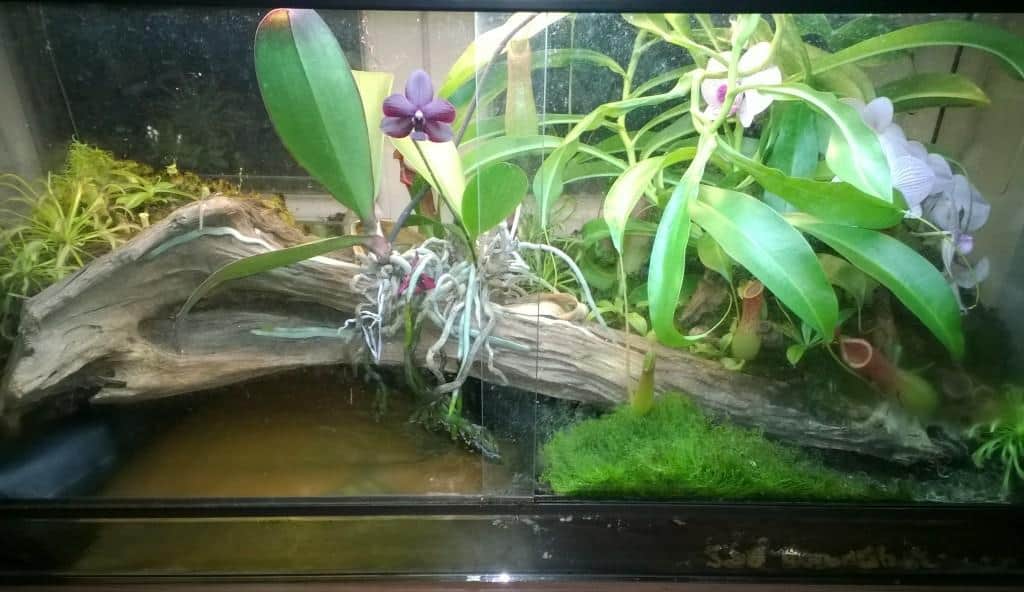
As the penultimate concept, it was identical to the current one, except I placed Utricularia longifolia in the paludarium, which began to grow uncontrollably and overran the entire terrarium. I also tried my first Heliamphora, and after discovering that it thrives under my care, I was able to proceed to the final version.
Current Parameters and Plant Selection of the Paludarium
Plants:
Heliamphora: minor, minor „Burgundy Black“, sarracenioides x ionasi (large red form x Killer giant, seedgrown), minor Selection 1, neblinae, pulchella
Nepenthes: ceciliae, glabrata, spathulata x adnata
Drosera prolifera
Animals:
Oriental fire-bellied toad – Bombina orientalis
Substrate:
Peat : pine bark : perlite in a ratio of 1:1:1
Technique:

